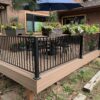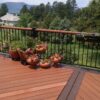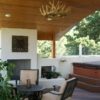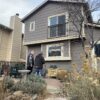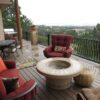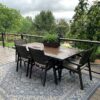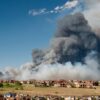
Why Wood is Still an Option for Your New Deck
So, you’ve decided to build a new deck on your home. You’ve spent hours researching the different material options available. You have finally decided that wood is going to give you the warm, natural look you desire. Now the next step is to determine what type of wood you want to use.
Redwood and cedar seem to be the most popular choices of wood used for decking here in Colorado. Their durability, strength, built-in resistance to insects and decay, and natural beauty are some of the reasons behind its popularity.
When it comes to environmentally friendly building materials, Redwood and Cedar are as green as it gets. Wood is the only building material that is renewable. The lumber producers have been replacing trees at such a rate that the North American forests have actually grown by 20% since 1970. The old-growth Redwood forests are highly protected by many rules and regulations by the Forest Stewardship Council (FSC). Redwood now comes from highly regulated, commercially grown forests, by companies who must provide a sustainable 100-year plan showing an equal balance between growth and harvesting.
It has also been shown, in independent studies, that wood products require much less energy to produce than concrete or steel. The studies compared how much energy is needed to obtain, manufacture, transport, and install building materials for identical wood, steel frame, and concrete houses. Also, the manufacturing of cedar and redwood has the lowest impact of all building materials on air and water quality. It produces far fewer toxins and greenhouse gases than the leading manufactured materials. The regeneration of the forests creates new trees that take in carbon dioxide and release oxygen, acting as nature’s air scrubbers.
Redwood
Once you make the decision to build a new wood deck, the next step is to determine what type of wood you want to use. Redwood is one of the most popular woods for deck building because it is a very stable, straight wood with a low shrinkage rate, so there is minimal splitting (checking).
The heartwood is also naturally resistant to wood-boring insects.
Redwood grades fall into two major grades – Heartwood and Sapwood. Sapwood is taken from the outer areas of the tree and has some of the reddish colored heartwood, but it is mainly a cream-colored wood.
Heartwood comes from the center of the tree and has a warm red color that gives Redwood its name. The next significant factor in grading is the number and size of knots in the wood – the fewer the knots, the higher the grade.
There are three different types of Redwood to consider for your deck:
- Deck Common Redwood – This comes from the outer areas of the tree and will have more of the sapwood than the heartwood so that the color will be lighter. It is an economical choice for building a Redwood deck.

- B Grade Redwood – It also has a combination of sap and heartwood, but the B Grading means it has fewer and smaller knots than Deck Common. B Grade will also have a lighter color due to the mixture of sap and heartwoods.

- Heart Redwood – This is the wood that comes from the center of the tree. There is no sapwood at all, so you get the desired red color that many people are looking for with a wood deck. Heart Redwood is also the most durable of all the grades. What makes Heartwood so special? Natural tannins. Tannins give the wood natural resistance to insects and decay. Heartwood is the most expensive of all the grades, but it is also the most durable.
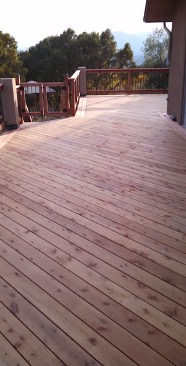
Cedar
Cedar is another popular choice because it has many of the same characteristics as Redwood. Cedar wood comes from British Columbia, Canada. As with the Redwood forests, the Cedar old- and new-growth forests in BC are heavily regulated and monitored.
Cedar is one of the most beautiful and durable woods available. Decking is usually made from the heartwood of the tree, which helps it resist moisture, rot, and insects.
Fresh cut cedar will provide decking boards in a wide range of honey/peach shades of light brown.
However, the coloring will vary depending on the type of Cedar used. For example, Western Red Cedar heartwood will have a red or pink-hued brown and the sapwood will be nearly white. The heartwood of Eastern White Cedar is a light brown (sometimes with a reddish tinge), and its sapwood is white tinged with yellow.
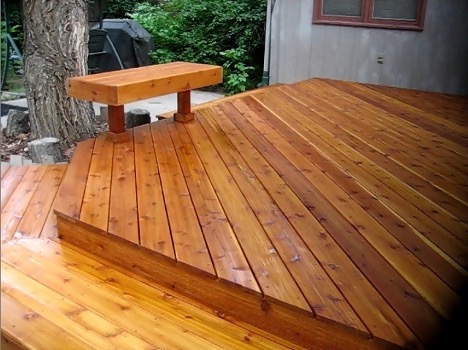
Decking Cedar usually comes in two different grades:
Architect Knotty – This is a sound and tight decking which limits both the size and quality of knots (Characteristics). It has a smooth, skip-free dressing, which makes it an excellent deck surface.
Custom Knotty – This grade results in decking boards with a hole-free knotty appearance. It may be applied as received and is an economical material for your cedar deck.
As you can see, choosing Redwood or Cedar will result in a dramatic, natural look for your new outdoor living space!



